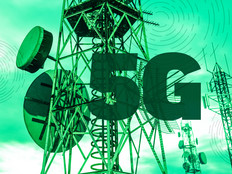Planning for PoE
Power over Ethernet products can do just what the term PoE advertises: They can power devices over Ethernet cabling.
This can be an incredibly liberating tool for network administrators. When the University of Tennessee, Knoxville, planned its campuswide wireless LAN deployment back in 2000, one of the most limiting aspects of the project was the availability of power for wireless access points. We took advantage of some early versions of PoE products on the market.
Since then, PoE has been ratified as a standard, 802.3af. And, more recently, a higher-power standard was ratified, 802.3at, known as PoE Plus.
Typically, PoE can be provided via an endspan, commonly referred to as a PoE switch, or a midspan, often known as a power injector. Here are some points to consider when making your PoE decision.
Tip 1: Decide between midspan and endspan.
Midspans only generate power, which means they can be used through a few generations of Ethernet switch changes.
Our original midspans, which were installed in 2001, lasted until 2009, and were replaced mainly because of the higher power requirements of 802.11n APs. Midspans are more versatile for capacity planning because injectors can be added or swapped out while the rest of the network infrastructure remains untouched.
One important point to remember is that if you plan for Gigabit Ethernet, make sure the midspan supports Gigabit Ethernet.
Endspans use less space, and because they combine both switching and power, there are fewer devices and fewer Ethernet patch cords to worry about. They can also be supported over one management interface. The main point to remember is that endspans become economical for deployments of 24 ports or more.
Tip 2: Make a power budget for each device.
It’s important to understand how much power you have available with each midspan or endspan and what kind of technology you plan to run over the devices.
For example, a midspan with a 200-watt power supply with 24 ports may be fine for 24 phones, but it won’t be enough wattage for 24 high-end 802.11n APs. Wireless APs, telephones, card readers, surveillance cameras and print servers all have different power requirements, so be sure to run an analysis of the power needs.
Tip 3: Be sure your cabling is compatible with your PoE device.
802.3af runs on Category 3 wire and up, while 802.3at requires Category 5 cabling at a minimum. Make sure that the cable plant is compatible with your application.
If you have old Cat5 cables that have been split to provide two Ethernet circuits, be aware that a midspan device will not work on split circuits (but an endspan will — at least for 802.3af equipment).
Tips 4: If you plan to deploy a UPS, think DC power.
Many organizations that deploy PoE also install an uninterruptable power supply to protect themselves in the event of a power failure. This is a tremendous benefit because if a building’s power ever does go down, the wireless Internet connection will stay up. Because many end users today have devices that run on battery power, they can continue to work and use the Internet during a power outage.
Although this is a nice benefit, if your UPS, main power supply and switch (or endspan) don’t all run on DC power, the electrical conversions (voltage change, inversion, rectification, etc.) required to go from AC to DC power are a waste of energy. Sticking with DC power after the UPS will reduce your energy costs and also save on unnecessary cooling costs.






